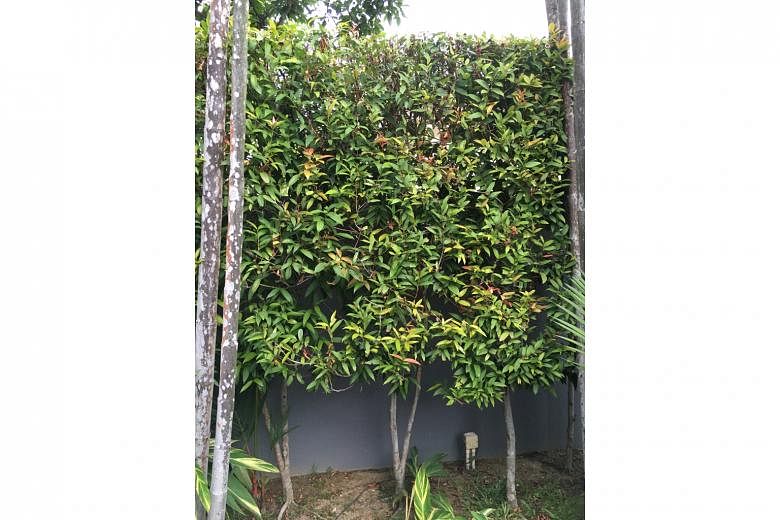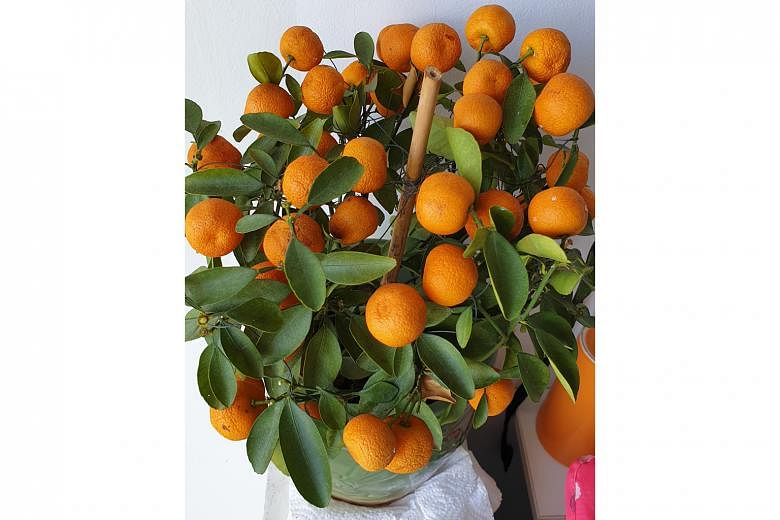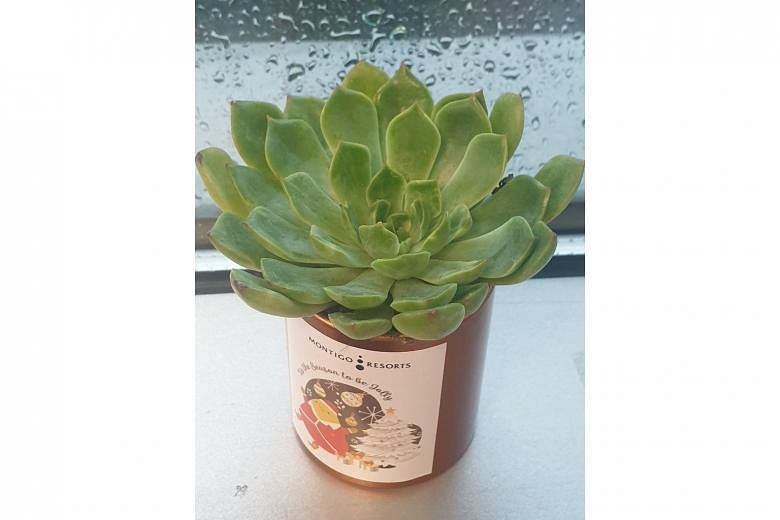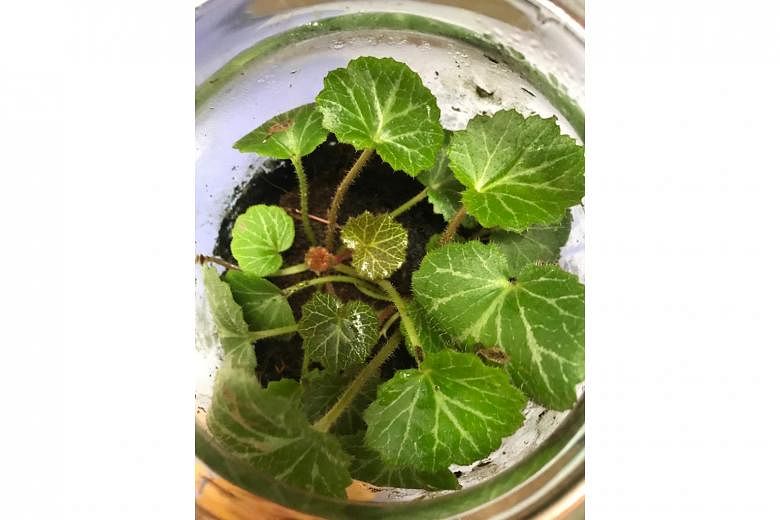Syzygium myrtifolium a common species for hedges
I want to grow some trees (preferably 3m or taller) or shrubs at my fence boundary for privacy. My current plant is the bengal clock vine, but it is too invasive and also not tall enough. I have some existing bamboo trees at the back, but they shed leaves copiously. I do not want those trees that have thick protruding roots, which will rip up my garden surface. I am thinking of shrubs that are frequently planted along road dividers and could grow quite tall, but I do not know their names. What is your advice?
Jeanette Wong
This plant is botanically known as Syzygium myrtifolium and its common names include Kelat Oil, Kelat Paya and Red Lip. It is a popular candidate for hedges.
Most of the plants sold in local nurseries are about 1.5m tall and will take several years to reach the desired height of 3m.
Several cultivars' new leaves can be variously coloured, which can be quite attractive.
The most common cultivar has orange new leaves and there are others that produce red or bright yellow new leaves.
Other trees that are commonly used for screening include Yew Pine (Podocarpus macrophyllus), Seashore Ardisia (Ardisia elliptica), Telegraph Pole Tree (Polyalthia longifolia) and Camwood (Baphia nitida).
Four Seasons Lime can be grown in Singapore as a potted fruit plant
I bought this mandarin orange plant last year during Chinese New Year. I was not expecting it to last beyond three months as I know the fruit usually fall off after a period of time. I have been giving the plant minimal care since then. It has been on my balcony with strong sunlight and I water only if I remember. But the oranges are still intact and their colour still brilliant. Is this normal? I am thinking of repotting it into a bigger container. Will it be affected? How long can a mandarin orange plant last?
Jessie Wong
The plant is commonly called the Four Seasons Lime and is a popular citrus used as a Chinese New Year festive plant.
It can be grown in Singapore in the long term and will flower and fruit several times yearly. The plant can be moved into a larger pot of well-drained soil mix.
Note that, in general, citrus plants do not like wet feet and will need to get at least six hours of direct sunlight to thrive.
Echeveria is best grown in well-drained, gritty mix in a sunny spot
What plant is this? It was a gift and came with the instructions that I should water only once a week and that the leaves cannot come into contact with water. Is it a cactus species? Will it outgrow this small pot and will it survive indoors with minimal direct sunlight?
Chua Hwee Kian
The plant is a cultivar of the echeveria, a type of succulent. Not all species or cultivars will fare well in tropical Singapore as some of these prefer a cooler climate.
It is best grown in a gritty growing mix such as one that is made of pumice or volcanic sand.
Such a growing mix will permit the drainage of water as the plant does not like wet feet, which can cause it to rot. Hence, you need to remove the current peat or coconut coir-based mix.
You can grow it under filtered sunlight for at least six hours daily to keep the plant compact.
Insufficient light can cause the plant to stretch and become visually unappealing where it develops a stem with widely spaced leaves.
The plant should be protected from rain and it can be watered about once a week, depending on your growing conditions. The growing mix should be watered thoroughly and allowed to dry out before watering again.
Propagate creeping saxifrage with stolons
I bought this potted plant a few weeks ago, but have been unable to find out its name. I notice it grew some long extensions with a small new shoot at each tip. Can I cut the new shoot and repot to propagate? If that is possible, what soil should I use and what are the things I should take note of during propagation?
Lee Han Siang
The plant is botanically known as Saxifraga stolonifera and its common name is creeping saxifrage. The stem extensions with a baby plant at the tip is called a stolon and this is how the plant spreads naturally.
The most reliable method is to allow the baby plant to root on some moist potting media and give it some time to grow. You can detach it when it has developed roots and is large enough to be handled.
This plant appears to thrive in cooler growing conditions. Under ambient tropical conditions, it remains as a small plant.
It needs to be protected from the rain as heavy rain can injure the leaves and cause them to rot.
• Answers by Dr Wilson Wong, an NParks-certified practising horticulturist, parks manager and ISA-certified arborist. He is the founder of Green Culture Singapore and an adjunct assistant professor (Food Science & Technology) at the National University of Singapore.
• Have a gardening query? E-mail it with clear, high-resolution pictures of at least 1MB, if any, and your full name to stlife@ sph.com.sg. We reserve the right to edit and reject questions.




